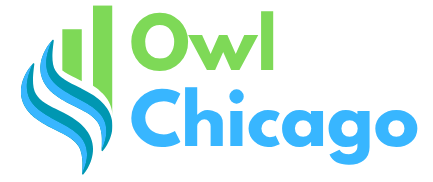Table of Contents
ToggleIn a world that glorifies hustle and grind, it’s easy to overlook the power of doing absolutely nothing. But what if the secret to unlocking creativity lies in those moments of blissful idleness? Creative downtime isn’t just a luxury; it’s a necessity for anyone looking to boost their innovation and problem-solving skills.
Imagine this: while you’re sipping coffee and staring blankly at the wall, your brain is actually busy cooking up brilliant ideas. It’s like a little creativity factory on a coffee break. Embracing downtime can lead to unexpected insights and fresh perspectives that a constant to-do list can’t provide. So, let’s dive into the delightful world of creative downtime and discover how it can transform not just your work but your entire mindset.
Understanding Creative Downtime Value
Creative downtime refers to moments set aside for relaxation, reflection, and mental rejuvenation. These periods allow the mind to wander freely, unlocking new ideas and fostering innovative thinking.
Definition of Creative Downtime
Creative downtime is time intentionally dedicated to rest and disengagement from structured work. It encompasses activities that might seem unproductive but actually promote mental flexibility. This period can include leisure activities, daydreaming, or simply enjoying nature. During these moments, the brain enters a relaxed state, fostering connections and insights that can lead to creative breakthroughs.
Importance in Modern Work Environments
In modern work environments, creative downtime holds significant value. High-pressure settings often prioritize constant productivity, leading to burnout. Incorporating downtime allows individuals to recharge, enhancing overall performance. Research indicates that teams with sufficient downtime exhibit greater innovation. Employees benefit from improved focus and creativity when they embrace breaks. By promoting a culture that values downtime, organizations encourage a healthier work-life balance and drive long-term success.
Benefits of Creative Downtime Value

Creative downtime offers multiple advantages that enhance both individual capacity and organizational success. Making time for rest and idleness presents opportunities for personal and professional growth.
Enhanced Creativity and Innovation
Creative downtime unlocks hidden potential, leading to breakthroughs in thought and innovation. Engaging in leisure activities facilitates mental flexibility. Daydreaming often results in new ideas that structured working hours don’t inspire. Observations from research reveal teams dedicated to regular downtime significantly outperform those that do not. Innovations stem from allowing the mind to roam freely. When employees step back from tasks, they often return with fresh perspectives and solutions, improving overall problem-solving abilities.
Improved Mental Well-being
Prioritizing creative downtime supports enhanced mental well-being and reduces burnout. Engaging in non-work-related activities fosters relaxation and rejuvenation. Regular breaks play a critical role in managing stress levels, contributing to a more balanced life. Research highlights that employees who allow themselves to disconnect experience better focus and productivity. Time spent in nature or pursuing hobbies brings significant psychological benefits as well. With intentional downtime, individuals cultivate resilience and emotional intelligence, influencing their performance positively.
Strategies to Incorporate Creative Downtime
Intentional strategies enhance the benefits of creative downtime. By implementing scheduled breaks and engaging in hobbies, individuals can foster innovation and well-being.
Scheduled Breaks and Time Off
Allocating regular breaks throughout the day significantly boosts creativity. Research shows that teams who schedule breaks experience higher productivity levels. Planning time off, whether a long weekend or a short getaway, allows for mental rejuvenation. Utilizing techniques such as the Pomodoro Technique, where one works for 25 minutes followed by a 5-minute break, promotes sustained focus. Employees return to tasks with renewed energy and fresh perspectives after stepping away. Consistent time off supports not just individual performance but overall team dynamics as well.
Engaging in Hobbies and Leisure Activities
Participating in hobbies and leisure activities enhances creativity. Activities like painting, gardening, or playing music shift focus away from work pressures. A diverse range of engaging activities allows individuals to explore new interests and develop skills. Such leisure pursuits often lead to unexpected insights and problem-solving breakthroughs. Engaging in physical activities, such as yoga or hiking, also supports mental clarity and well-being. Embracing personal interests fosters a more balanced life, creating space for creativity to thrive while reducing stress. This engagement enriches both personal fulfillment and professional performance.
Measuring the Impact of Creative Downtime Value
Understanding the value of creative downtime requires effective metrics to gauge its impact. Organizations can track specific indicators that highlight improvements in creativity and innovation.
Metrics for Assessing Creativity
Evaluating creativity involves both qualitative and quantitative measures. Surveys and feedback from team members can provide insights into perceived creativity levels. Metrics such as the number of new ideas generated during brainstorming sessions or the frequency of innovative solutions can quantify creative output. Additionally, tracking project success rates before and after implementing downtime can reveal its effectiveness. Companies might also consider measuring employee engagement levels, as heightened engagement often correlates with increased creative performance.
Analyzing Employee Productivity
Employee productivity benefits significantly from structured creative downtime. Organizations can monitor project completion times and quality of work to assess productivity changes. Notable improvements typically arise after implementing regular breaks or downtime practices. Monitoring stress levels among employees offers another layer of insight. Reduced stress correlates to enhanced focus and efficiency. Additionally, tracking absenteeism and burnout rates can provide a clearer picture of how downtime influences overall well-being and productivity. Organizations committing to creative downtime often see an uptick in team morale and collaboration, driving better performance outcomes.
Case Studies and Real-World Applications
Numerous organizations recognize the benefits of creative downtime. Google exemplifies this by implementing a 20% project time, allowing employees to pursue passion projects. Employees often report higher job satisfaction and increased innovation.
Another case is Microsoft, which encourages flexible work hours. This strategy allows workers to engage in activities that inspire creativity. Employees often come back with fresh ideas that drive the company’s success.
A significant study conducted by the University of California found a direct link between creative downtime and problem-solving abilities. Participants who took breaks during tasks demonstrated better performance than those who did not. Data showed that strategic downtime led to a 20% increase in idea generation.
IBM has also invested in creative downtime through the practice of innovation jams. Employees participate in brainstorming sessions that combine structured time and leisure. As a result, teams uncover innovative solutions they wouldn’t find in conventional settings.
Furthermore, research by the National Institute of Mental Health highlights that regular leisure activities can enhance mental clarity. Individuals engaging in hobbies such as painting or gardening reported a 30% boost in productivity when they returned to work.
Lastly, companies like Zappos encourage outdoor activities, allowing staff to refresh during work hours. Employees often experience reduced stress and improved focus after connecting with nature. Innovative breakthroughs frequently emerge from these rejuvenated minds.
Creative downtime clearly benefits organizations, enhancing not only employee well-being but also fostering innovation and improved performance.
Embracing creative downtime is essential for unlocking potential and fostering innovation. By prioritizing moments of rest and disengagement, individuals and organizations can cultivate a more dynamic and productive environment. The benefits extend beyond personal well-being, enhancing team collaboration and overall performance.
As the fast-paced world continues to demand constant output, recognizing the value of downtime becomes increasingly important. It’s not just about taking breaks; it’s about creating opportunities for the mind to wander and generate fresh ideas. By integrating creative downtime into daily routines, everyone can experience improved focus, reduced burnout, and a renewed sense of creativity.




